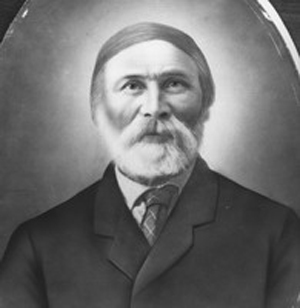James Isbister National Historic Person (1833-1915)
James Isbister was designated as a national historic person in 1997.
The Historic Sites and Monuments Board of Canada reviewed this designation in 2022.
Commemorative plaque: 19th Avenue West, along the Rotary Trail, Prince Albert, SaskatchewanFootnote 1
James Isbister (1833-1915)
This English Métis leader founded the Isbister Métis settlement (Prince Albert), where he and his spouse Margaret Bear established a farm in 1862. He guided his people through the 1870s and 1880s, helping unite the English and French Métis in their many attempts to have Canada recognize their land rights. In 1884, Isbister was one of four Métis delegates who travelled to Montana, inviting Louis Riel to come to the Prince Albert district to lead the Métis protest movement. Isbister supported the Métis cause but did not participate in the 1885 Resistance after the Batoche-area Métis reluctantly took up arms.

© Glenbow Museum / NA-4043-4
James Isbister (1833-1915)
James Isbister was born at Oxford House (Manitoba) in 1833 to a Scottish father and Métis mother. It is believed that he obtained an education at Red River Settlement and was fluent in many languages, including Gaelic, Cree, and Michif, the language of the Métis Nation. At 20 years old, Isbister followed in his father’s footsteps as an employee of the Hudson’s Bay Company, remaining with the fur trading organization for most of the next two decades. However, due to ongoing discrimination against Métis employees and his father’s low Company rank, Isbister never rose above the position of clerk, retiring from the HBC in 1871. Like many Métis of his era, Isbister developed a flexible economic strategy for survival, operating a farm and working as a freighter to supplement his family’s income. In 1862, Isbister and his Métis wife, Margaret Bear, founded the Isbister Métis Settlement (Prince Albert, Saskatchewan), leading the community and establishing several farmsteads in the region over the ensuing decades.

In the late 1870s and early 1880s, the federal government began land surveys in modern-day Saskatchewan (then the North-West Territories) to create 160-acre, square homesteads for newcomers to the region, encroaching on Métis lands with traditional long, rectangular river lots. As a result, Isbister became a leader in the movement to gain redress for Métis grievances against the Canadian government. In 1878, for instance, he helped draft a petition on land, surveys, and scrip (money and land certificates) signed by dozens of Métis and non-Indigenous settlers. In 1883, Isbister took a leading role in the Settlers’ Union, an organization established at Prince Albert to advocate for redress of land grievances. The next year, the Métis Council at St. Laurent (located on the South Saskatchewan River) sent four allies of Riel – Isbister, Gabriel Dumont, Moïse Ouellette, and Michel Dumas – as delegates to Montana, tasked with convincing Louis Riel to return to Canada to lead their protest movement. Isbister decided not to follow Riel during the 1885 Resistance after the Batoche-area Métis reluctantly took up arms. Nonetheless, upon his return to Prince Albert after the Resistance, Isbister was arrested and temporarily jailed. Throughout the struggle, he remained loyal to the Métis Nation and is recognized today as one of its influential leaders.
After 1885, Isbister remained in Prince Albert where he farmed, engaged in Anglican parish life, and taught Indigenous children on local reserves. In 1915, he died at Prince Albert.
This backgrounder was prepared at the time of the plaque unveiling in 2022; Modified in October 2023.
Review of designation
Reviews are undertaken on an ongoing basis to ensure that designations reflect current scholarship, shifts in historical understandings, and a range of voices, perspectives and experiences in Canadian society.
In 2022, this designation was reviewed due to colonial assumptions in the commemorative plaque text. The original plaque text included language that incorrectly implied that the Batoche-area Métis who followed Louis Riel were violent. More accurately, they reluctantly took up arms after many peaceful attempts to have their grievances addressed were ignored by the federal government.
The plaque text was updated to more accurately represent Métis involvement in the Northwest Resistance of 1885. The new plaque was installed in 2022.
Sources: Historic Sites and Monuments Board of Canada, Minutes, June 1997; July 2022.
The National Program of Historical Commemoration relies on the participation of Canadians in the identification of places, events and persons of national historic significance. Any member of the public can nominate a topic for consideration by the Historic Sites and Monuments Board of Canada.
- Date modified :